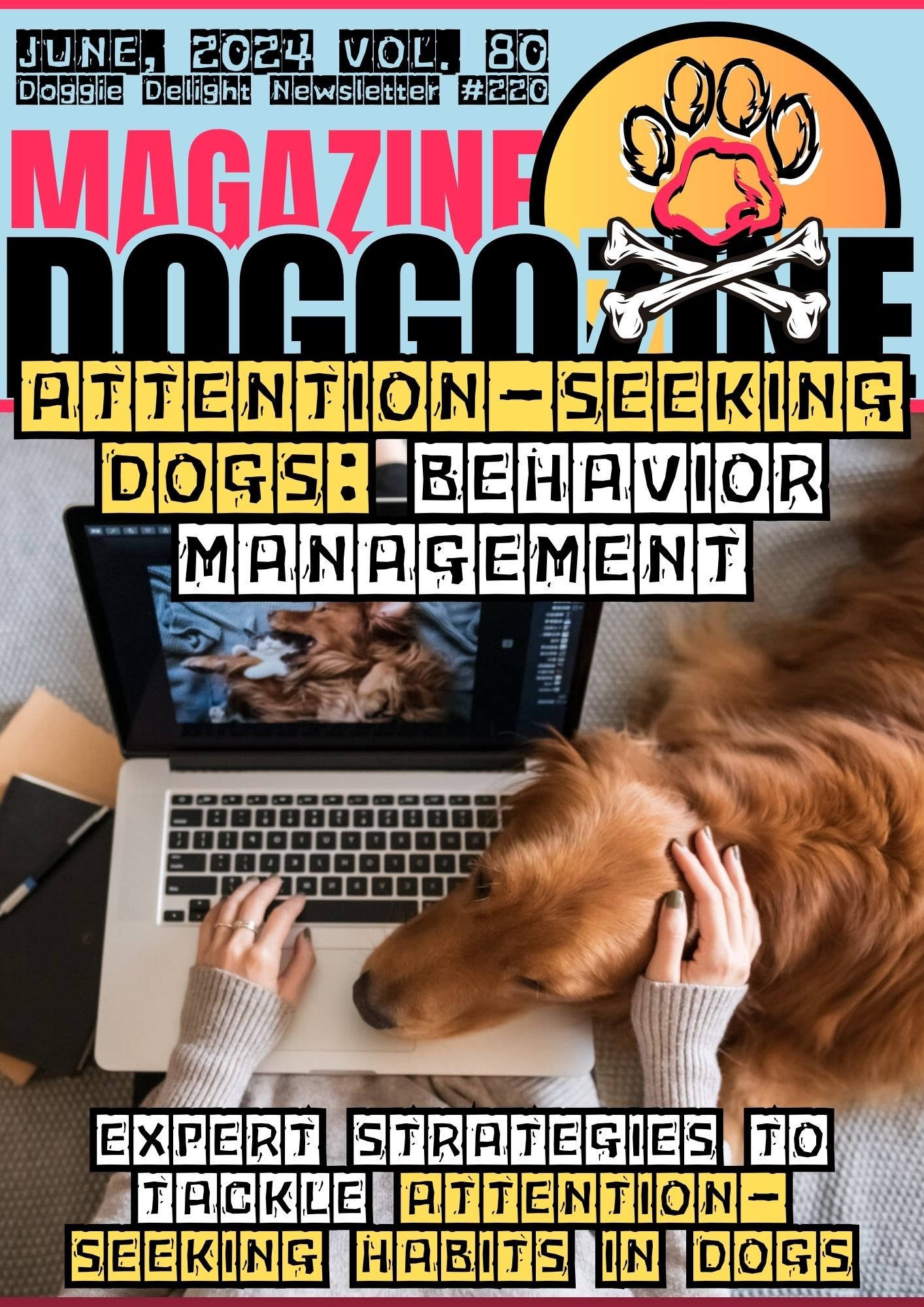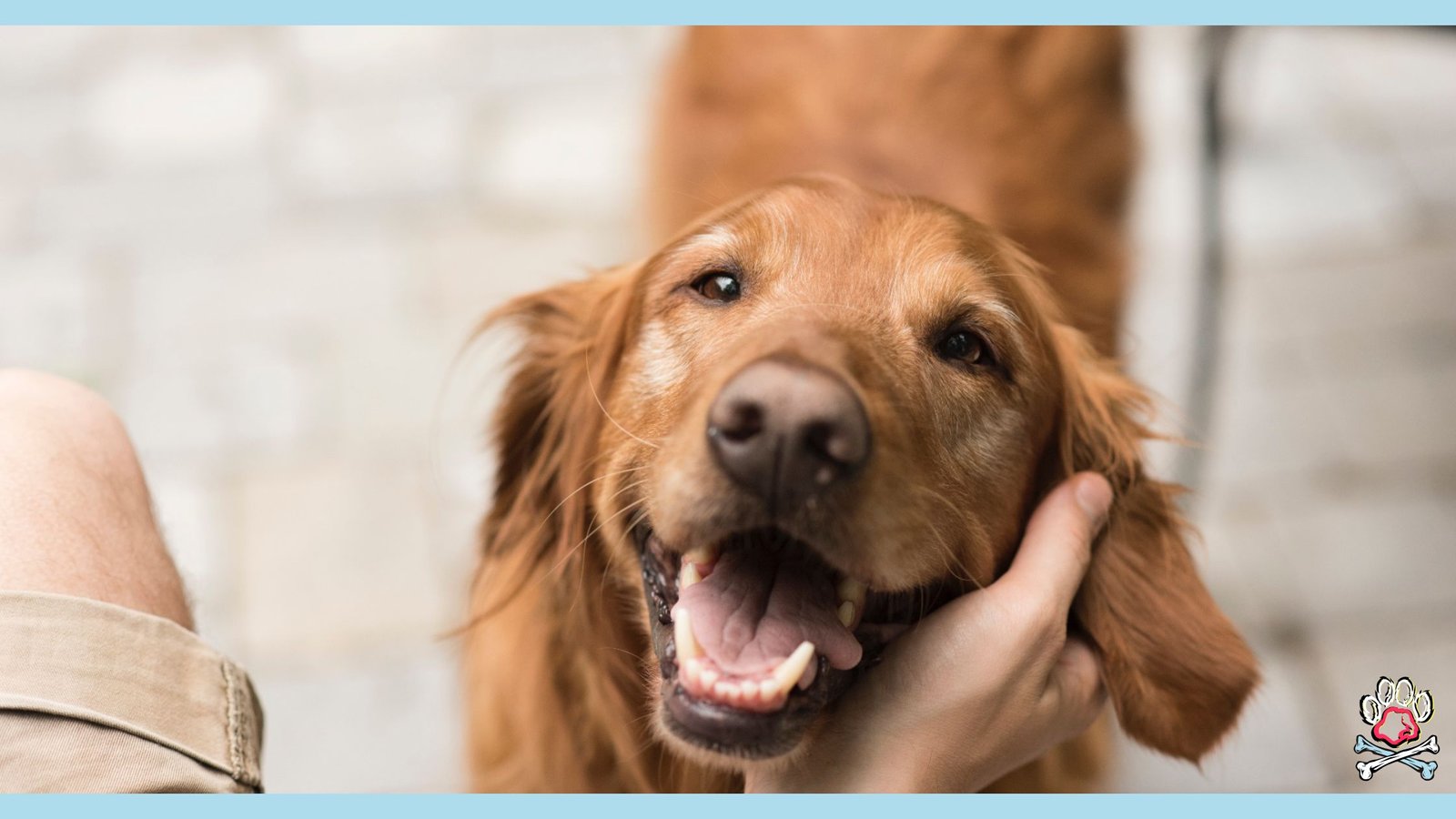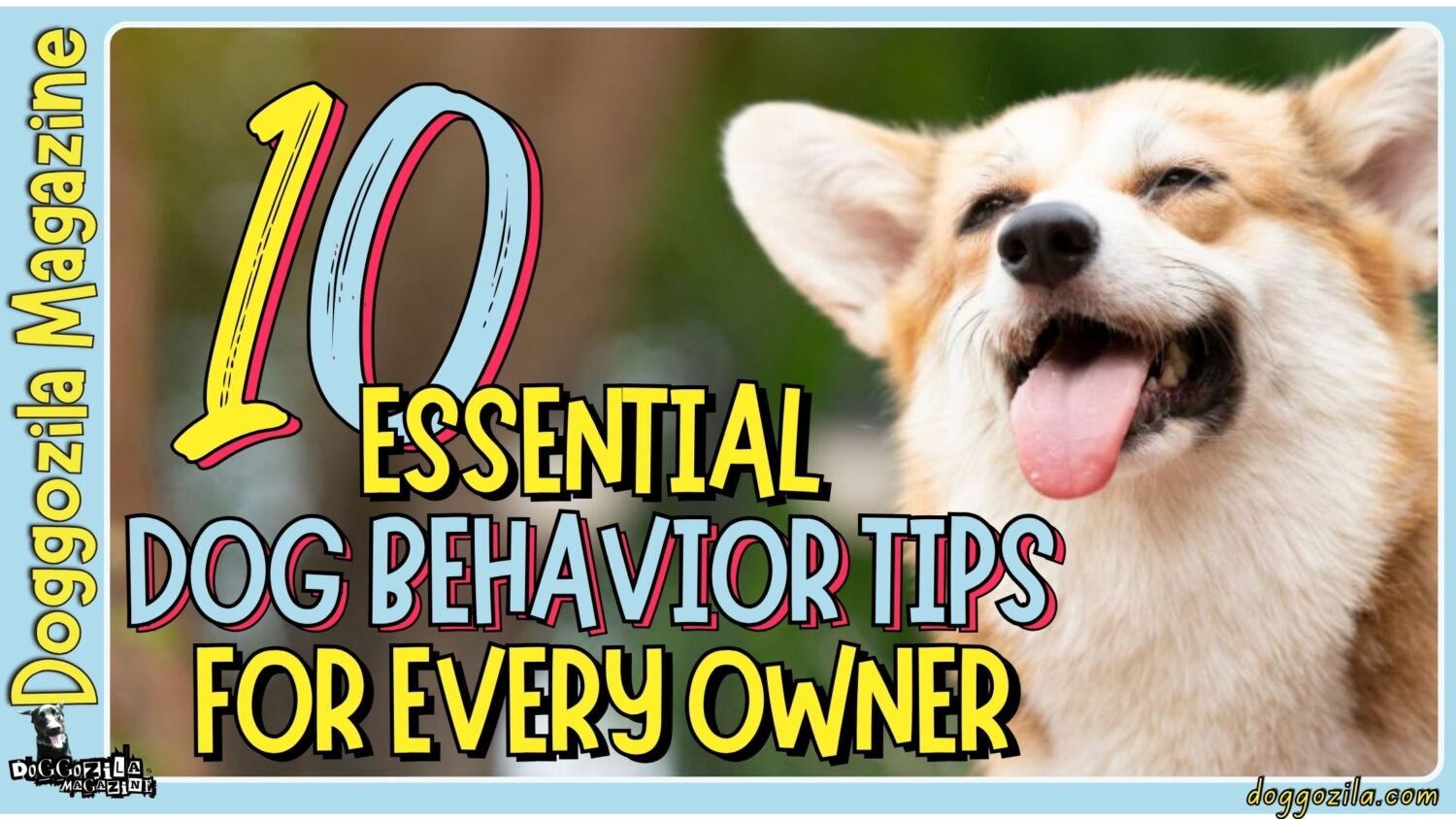
EXPERT STRATEGIES TO TACKLE ATTENTION SEEKING HABITS IN DOGS
Are you tired of constantly dealing with extreme attention seeking behaviors that your dogs display? It can be difficult to concentrate when your dog is constantly barking or pawing at you. These behaviors can be frustrating, but there are effective strategies we can use to address them. Our goal is to improve your relationship with your beloved pet while bringing peace to your home. Let’s get started!
Journey To Mastering Extreme Dog Behavior
Can dogs be attention seeking? In this blog post, we’ll explore proven strategies. We’ll go beyond just addressing the attention seeking dogs’ symptoms. We’ll help you understand the root causes. Then, we’ll teach positive reinforcement techniques. Utilizing these resources, you will be able to change your dog’s behavioral pattern. You would create a friendly relationship full of understanding and regard.
If you want to go further, come on board!
We would reveal tips on how to control dog behavior. We’ll enhance your furry friend’s life quality. Get ready to unlock possibilities. With patience, understanding, and training, you’ll build a stronger bond. This bond is eternal.
Definition of Attention Seeking Behavior in Dogs
Any activity that your dog engages in to gain your attention is known as dog attention seeking behavior. It can be good or bad behavior. Some of the most prevalent types include barking, jumping at people, pawing, or licking hands. In these cases, your pet literally desires all your attention. But what does it mean when my dog wants attention?
Sometimes, your furry friend might be trying to communicate a need, like going outside or feeling hungry. But often, their behaviors aim to capture your attention. Do dogs like a lot of attention? After all, dogs are sociable pets who enjoy being with their masters. So they naturally seek your focus.
Address the Attention Seeking Behavior in Dogs
When it comes to your dog companions demonstrating attention seeking behaviors that become frequent or ill-timed, it can no doubt be disconcerting. Picture yourself having a tranquil dinner as your furry friend leaps onto the dinner table or barks uncontrollably!
Coping with disturbances like these can be difficult. It is important to note the reasons for attention seeking dogs behaviors in order to resolve such issues and bring peace back to your house. It helps restore harmony in your home. By addressing the underlying reasons, you can effectively manage and redirect this conduct.
🔑 Key Points: Dogs tend to perform different activities for the sole purpose of attracting a human’s attention. It is normal for dogs to exhibit feelings and behaviors oriented toward even active attention seeking. However, it cannot be denied that this problem may become serious if not controlled. Excessive attention-seeking behaviors in dogs can be corrected by understanding the causes and controlling them.
Causes of Attention Seeking Behavior in Dogs
Several factors contribute to attention seeking behavior in dogs. Attention seeking dogs may lack proper training and established boundaries. Once a dog learns that certain behaviors lead to a desired outcome, it will likely repeat those behaviors.
For example, if a puppy jumps and receives attention by being petted or talked to, it quickly realizes that jumping brings attention. This helps explain why these learned behaviors are easily established but difficult to change. Boredom, insufficient exercise, and anxiety can also trigger attention seeking conduct.
Dogs with pent-up energy or feeling stressed may resort to attention seeking as an outlet. They may engage in disruptive behaviors to release tension or seek comfort from their owners.
Mentally Stimulated Dogs don’s have Seeking Attention Behaviors
In addition to this, it is worth mentioning that when the dogs are not mentally stimulated, it contributes to seeking attention. This is largely due to the fact that dogs are smart animals and need to have room to probe, learn, and think. Where their mental stimulation is inadequate they will be seeking attention in order to distract themselves from the boredom or uneasiness that they feel.
It’s important to acknowledge these root causes when exploring attention-seeking behavior in all dogs. Simply correcting behavioral issues through behavioral training for dogs with anxiety, setting restrictions, increasing physical activities and mental enrichment, and preventing anxiety-provoking factors will help minimize over-attention seeking and keep the dogs more manageable. Dogs sometimes exhibit attention-seeking behavior for various reasons. It is important to know the causes of such behavior in your dog. It helps find a solution and ensures they become well-mannered family members.
🔑 Key Points: Some behaviors in dogs, known as attention seeking behaviors, often arise from being unintentionally reinforced by their owners. These behaviors can also occur when there are no clear boundaries set, when the dog is bored, or when the dog feels scared.
Strategies for Preventing Attention-Seeking Behavior in Dogs
Prevention is key when addressing behaviors in attention seeking dogs. So, how to stop attention seeking behavior in dogs?
Here are some strategies to set your pup up for success:
- Meet Your Dog’s Needs: An overactive dog who engages in active play, interacts with their owner, and participates in some mental stimulation is less likely to display attention seeking behavior inappropriately. Make sure your pet is given enough exercise, lots of playtime, and physical interaction. This helps fulfill their natural instincts and keeps them content.
- Set Clear Boundaries: Teach your dog the dos and don’ts of behavior. Follow your rules and indeed your expectations. Dogs appreciate guidelines and clear expectations.
- Reward Good Behavior: One of the effective methods of treating and training dogs is the application of positive reinforcement. Rewarding and giving attention to one’s dog should be done in a calm manner and only when the dog is not in an excited state and behaving properly.
- Provide Appropriate Outlets: It is important to give your dog a variety of suitable outlets for their energy and expression. Puzzle toys, chew toys, and interactive play are excellent options for giving attention seeking dogs mental stimulation and exercise.
Tired Dog Is Happy Dog
There are many ways to avoid the problematic development of attention seeking behaviors in dogs, by preventing their needs from being ignored, or most simply, by setting the dog up for success. Don’t forget – if your dog is tired, it’s happy and well-behaved! This is why, with time and work, you will teach your four-legged companion the right behavior and this will serve to strengthen your relationship.
🔑 Key Points: To avoid attention seeking behavior, it is necessary to satisfy the needs of the dog. This involves providing exercise, playtime, and mental stimulation. Also, set clear rules and reward good conduct. Offer appropriate outlets for expression.

TECHNIQUES TO REDIRECT BEHAVIOR OF ATTENTION SEEKING DOGS
How to stop attention seeking behavior in dogs? Despite your efforts, attention-seeking behavior may still occur in your dogs. When it happens, have strategies to redirect your dog’s focus. And encourage positive behavior.
Here are some effective techniques:
Reward Alternative Behaviors
When your dog seeks attention, ask them to do something different. For instance, if they jump up, ask them to sit. When they obey, praise and treat them. Over time, they’ll learn sitting gets attention, not jumping.
Ignore Unwanted Behavior
For some attention seeking dogs, ignoring can be effective. Don’t look, talk, or touch them. Once they’re quiet, calmly praise them. This teaches barking doesn’t work, but being quiet does.
Manage Your Dog’s Environment
It’s easier to prevent attention seeking by managing their environment. If they jump on guests, put them in another room. If they bark at passersby, close curtains, or move their bed. Limiting triggers can reduce unwanted behaviors.
Offer Enrichment Activities
Dogs can become easily bored, this often leads to attention-seeking behavior. To prevent this, provide mentally stimulating activities. Puzzle feeders are great options. These are toys that require problem-solving to access treats. Snuffle mats are also excellent choices.
Dogs must use their noses to search for hidden treats. Treat-dispensing toys keep dogs engaged. The toys release treats as dogs play with them. It’s crucial to be consistent when addressing attention seeking behavior. Stay patient. Over time, your dog’s behavior will improve.
🔑 Key Points: Redirect attention seeking by rewarding all the good behavior that dogs display. Ignore unwanted actions when appropriate. Manage your dog’s surroundings. Offer enriching activities to prevent boredom.

IMPORTANCE OF EARLY SOCIALIZATION IN PREVENTING ATTENTION SEEKING BEHAVIOR IN DOGS
Early socialization shapes the behavior of attention seeking dogs throughout their lives. Expose your puppy to diverse people, places, and experiences during the socialization period (3-16 weeks). This can prevent issues like attention seeking. Well-socialized puppies are confident and adaptable. They don’t need to seek attention inappropriately. They develop good manners and social skills. Positive puppy training during socialization is crucial. Reward calm, polite behavior around others. This builds a lifetime of good conduct.
Do you have an older dog?
Are you worried about socializing with them? Don’t fret! It’s never too late. With some patience and guidance, you can teach new skills. A professional trainer can show safe, effective ways to socialize your adult dog.
🔑 Key Points: Early socialization is vital. It prevents attention seeking habits and fosters well-behaved, confident dogs.
Positive Reinforcement: A Key to Effective Training
Positive reinforcement underpins effective dog training. It’s key to curbing the behavior of attention seeking dogs. The idea? Reward good conduct, and ignore bad behavior. When your dog is calm and polite, praise them warmly. Give treats and attention. This reinforces that good deeds get them the positive focus they want.
But if they act out for attention—barking, jumping, etc.—ignore them entirely. With positive reinforcement, training becomes quality bonding time. It’s fun, not a chore! Studies reveal dogs trained this way learn eagerly. They stay resilient despite stress and distractions. They gain a “can-do” spirit and enjoy working with their humans.
Studies show that attention seeking dogs trained with positive reinforcement are more resilient and motivated, learning faster while building trust and confidence with their humans. Your dog will love earning your praise and affection through good conduct. So be patient, and consistent, and always make training an enjoyable experience. Soon, your furry friend will pick up polite manners effortlessly. By reinforcing desired behaviors, you strengthen your bond and instill lasting life skills.
how to use positive reinforcement training effective
- Get a tasty treat or a fun toy your dog loves.
- Right after your dog does the behavior you want, give the reward.
- Keep training sessions short and lively.
- Slowly stop using treats. Instead, praise and pet your dog.
With patience and consistency, positive reinforcement will help your dog learn faster. It will also strengthen your bond.
🔑 Key Points: Rewarding good behavior works well to teach your dog. It creates an eager learner and a strong bond between you.
Building a Strong Bond Through Behavioral Training
Training is more than just fixing problems. It’s a chance to deepen your relationship with your dog. As you work on attention-seeking, you build trust. You learn to understand each other better. Your dog looks to you for guidance. You learn to read their body language and needs.
As your dog’s behavior improves, your bond grows stronger. You’ll enjoy a calmer, more harmonious time together. Training becomes a special bonding experience. You work as a team, with mutual respect and love. Embrace training as an opportunity. Not just to improve behavior, but to forge an unbreakable bond with your dog.
🔑 Key Points: Behavioral training is a valuable tool. It helps address attention seeking behavior in dogs. It also strengthens the bond between the dog and the owner.
Professional Help: When to Seek Assistance
Many behaviors of attention seeking dogs can be addressed with training at home. But sometimes, professional help is needed. If your dog’s behavior is severe or persistent, seek assistance. If it causes stress for you and your family, get help. A skilled trainer can assess your dog’s needs. They can develop a training plan for your dog.
The trainer will guide you on behavior techniques. They will help you implement them effectively. Along the course, trainers may encounter and solve certain problems. Don’t hold back in seeking assistance. It helps to ensure that the training is fast and effective. Professional assistance is invaluable for severe attention-seeking behavior.
🔑 Key Points: Seek a professional trainer’s help for severe attention seeking behavior. Trainers provide customized plans and guidance.

THE ROLE OF CONSISTENT ROUTINE IN DOG TRAINING
Dog training requires a lot of repetition. Creating a schedule has a positive effect on one’s conduct. Routines and predictability are favorable for dogs. When an individual is aware of what will happen next, stress and anxiety are minimal. These factors often trigger attention seeking behavior. Keep your dog’s schedule consistent. This includes mealtimes, potty breaks, exercise, and training. A routine helps dogs feel secure. It also makes sticking to the training easier for you. Maintaining consistency reinforces positive behaviors and creates a calm environment.
Remember, being steady isn’t just about making a timetable. It’s about how everyone responds when your dog seeks attention. Make sure everyone at home agrees on training methods. Everyone should react similarly when your dog wants you to pay attention.
🔑 Key Points: Having a routine and everyone helping with training can really improve your dog’s behavior. It can also help reduce stress for both you and your pup.
Neutrality Training Technique: Balancing Attention
One good way to train your dog not to constantly seek attention is called “neutrality training.” The goal is to teach your dog that simply being near you is enough sometimes. Attention seeking dogs don’t always need you to engage with them. For neutrality training, spend time with your dog without actively playing with or petting them.
In the same space as your pet, you could do some reading, listen to music, or get engaged with your laptop ignoring any appetitive stimuli such as barking or nudging. But calmly praise them when they’re relaxed and quiet. Over time, your dog will learn they don’t need your constant attention. They can be content just being close to you.
🔑 Key Points: Neutrality training helps dogs understand they don’t always need to work for your attention. They can enjoy simply being in your presence.
Understanding Dog’s Needs: Beyond Attention
Attention seeking dogs have needs beyond just wanting your attention. It’ll be important to consider their physical, mental, and emotional needs every single day. A dog that is fit and happy will tend to demand your attention less often. Without being exercised, the dog not only gets bored but also becomes unhealthy due to the excess energy that makes it restless. Boredom may also be curbed by training sessions or the use of puzzle toys among other mentally stimulating activities.
Playtime and being able to show affection are functional too as they address emotional status as well. There is no way that you will have your dog excessively seeking attention from you if you ensure that all their basic needs are adequately catered for. Such a balanced routine enables your dog to get the required mental stimulation without having to depend on you completely for it.
🔑 Key Points: Dogs have physical, mental, and emotional needs and they are somehow different from just wanting the attention of their owners.

CHALLENGES IN TRAINING RESCUE DOGS: A SPECIAL FOCUS
If you’ve been wondering: ‘what is the most attention seeking dog?’ the answer is rescues. Rescue dogs often come with unique behavioral challenges. They may act out to get attention. Be patient and understanding with your rescue dog. Work with a trainer who has experience helping rescue dogs adjust to new homes. With love, consistency, and positive training methods, your rescue dog can thrive in their new environment.
🔑 Key Points: Rescue dogs may need extra patience. They may also need specialized training to overcome attention seeking behaviors.
A Quick Summary about Attention Seeking Dogs
In order to control your dog’s behavior and prevent it from engaging in attention seeking actions, one must possess knowledge, patience, and training. First, define what needs addressing attention seeking behavior. Then, explore the possible reasons behind it. Next, take steps to prevent it and redirect your dog’s focus. Follow these tips in order to understand your pet better.
Correcting bad behavior is made easier with early socialization and positive reinforcements. If necessary, do not hesitate to turn to professionals. Adhere to the same schedule when taking care of the dog. These actions will aid your training journey. To effectively navigate behavioral issues, prioritize your dog’s needs. Use positive, reward-based training techniques. Approach challenges with a calm, optimistic mindset. Building a strong bond takes effort, but it’s a rewarding experience.
Stay committed and patient throughout the process. Over time, with consistency, you will start to see improvements in your dog’s behavior. This training adventure will strengthen your lifelong connection, built on trust and mutual understanding. Your well-behaved, happy dog awaits this transformative journey with you.









